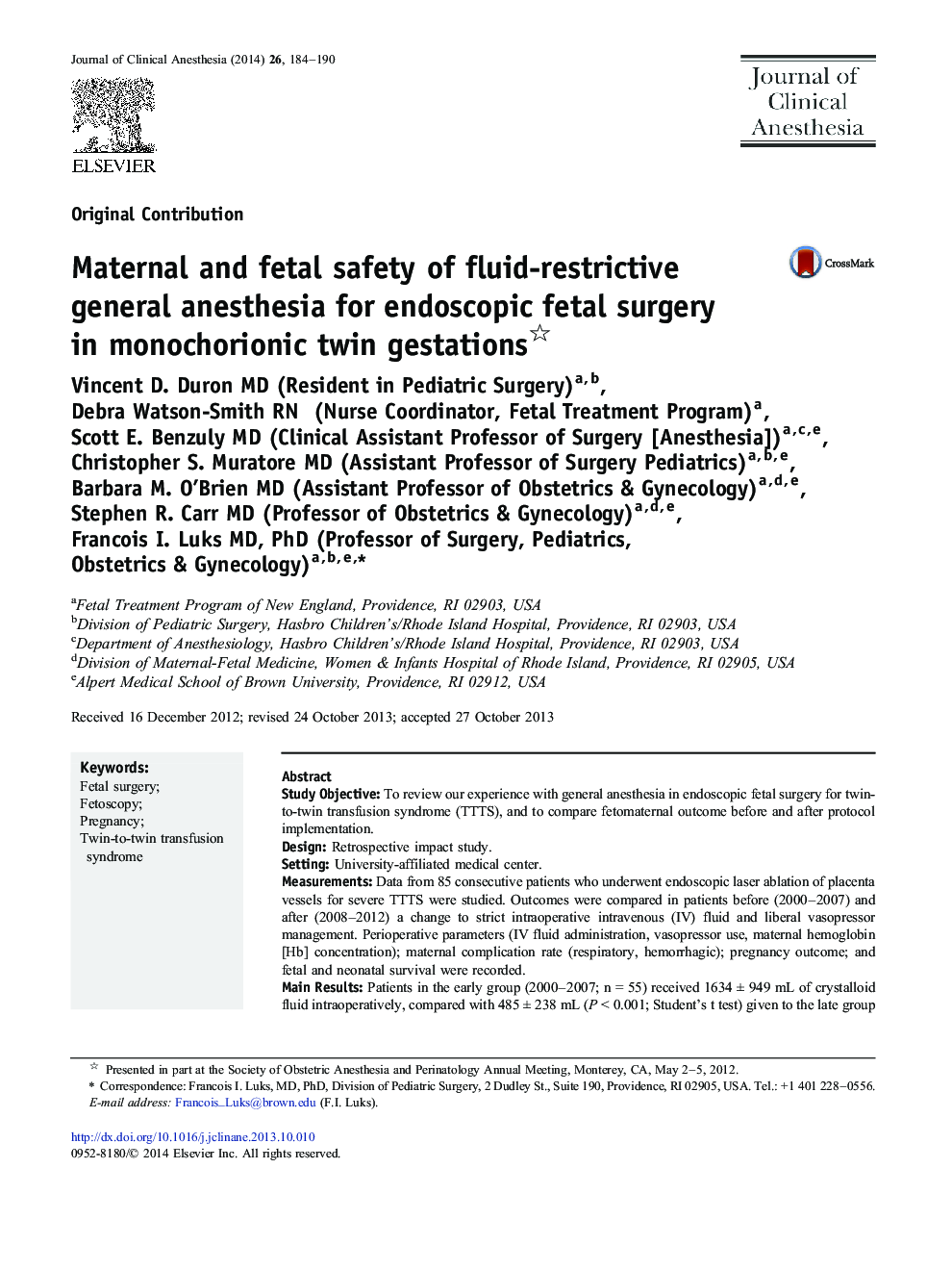| Article ID | Journal | Published Year | Pages | File Type |
|---|---|---|---|---|
| 2762464 | Journal of Clinical Anesthesia | 2014 | 7 Pages |
Study ObjectiveTo review our experience with general anesthesia in endoscopic fetal surgery for twin-to-twin transfusion syndrome (TTTS), and to compare fetomaternal outcome before and after protocol implementation.DesignRetrospective impact study.SettingUniversity-affiliated medical center.MeasurementsData from 85 consecutive patients who underwent endoscopic laser ablation of placenta vessels for severe TTTS were studied. Outcomes were compared in patients before (2000–2007) and after (2008–2012) a change to strict intraoperative intravenous (IV) fluid and liberal vasopressor management. Perioperative parameters (IV fluid administration, vasopressor use, maternal hemoglobin [Hb] concentration); maternal complication rate (respiratory, hemorrhagic); pregnancy outcome; and fetal and neonatal survival were recorded.Main ResultsPatients in the early group (2000–2007; n = 55) received 1634 ± 949 mL of crystalloid fluid intraoperatively, compared with 485 ± 238 mL (P < 0.001; Student’s t test) given to the late group (2008–2012; n = 30). Maternal pulmonary edema and any respiratory distress were seen in 5.5% and 12.7% of patients in the early group, respectively, and in none of the late group patients (P < 0.05; Chi-square analysis).ConclusionsA significant risk of maternal respiratory complications exists after general anesthesia for endoscopic fetal surgery. Judicious fluid management significantly decreases this risk.
